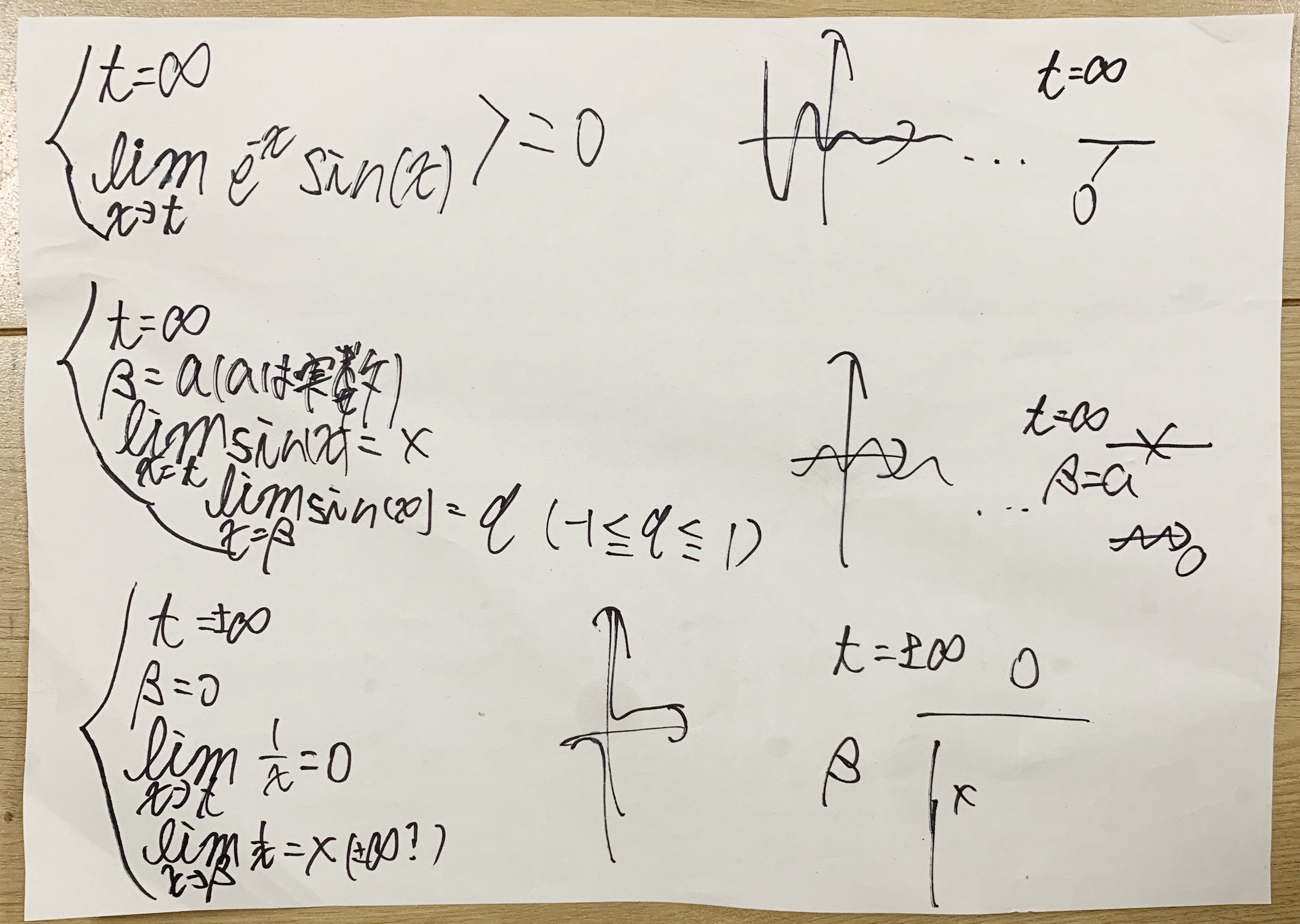May 25, 2025
Wave Decay and Considerations Through Limits
Overview: This record explores the phenomenon of wave decay from a mathematical perspective.
While watching ripples in a bathtub, Reiji began pondering: “What happens to a wave as time approaches infinity?” From this question, he analyzed the behavior of waves using decay functions, limits, and undefined cases.
The attempt seeks to bridge intuitive physical understanding and mathematical reasoning by translating real-world phenomena into equations.
Note: All content on this page is originally explained by Reiji in Japanese. The English version is translated by AI and structured by a parent, with Reiji's final approval.
Reiji's Words and Ideas
- This note captures thoughts that arose while observing ripples in bathwater. As the waves diminished, I wondered if they could be described mathematically.
- The first equation, \(\lim\limits_{x \to t} e^{-x} \sin(x)\), describes convergence to 0 as \(t \to \infty\). In the real world, we can’t wait for infinity, but values approach zero asymptotically.
- In the next equation, assuming \(\beta = a\) (where \(a\) is a real number), we get \(\lim\limits_{x \to \beta} \sin(x) = q\) where \(-1 \le q \le 1\). Since \(\lim\limits_{x \to \infty} \sin(x)\) is undefined, this represents a wave that continues indefinitely.
- \(\lim\limits_{x \to \infty} \frac{1}{x} = 0\) serves as an example of a wave that fades with distance. Meanwhile, \(\lim\limits_{x \to 0} \frac{1}{x}\) is undefined, modeling divergence.
- All the expressions ultimately converge to one of three states: \(\infty\), undefined, or 0. I found it fascinating that wave behavior could be interpreted within these boundaries.

Hand-drawn notes visualizing wave decay through equations and graphs
Behavior of \(\lim_{x \to t} e^{-x} \sin(x)\)
Comparison between \(\lim_{x \to \infty} \frac{1}{x}\) and \(\lim_{x \to 0} \frac{1}{x}\)
Classification of \(\lim_{x \to \beta} \sin(x)\) into undefined, finite, or converging values
| Application Used |
Pen and paper (handwritten) |
|---|
AI Assistant’s Notes and Inferences
- This observation is an attempt to interpret real-world waves through mathematical expressions, bridging intuition and formal analysis.
- The decaying wave function \(e^{-x} \sin(x)\) commonly appears in differential equations and physical models, illustrating wave behavior and energy dissipation.
- Categorizing wave behavior using the triad of infinity, undefined, and convergence (0) provides a deeply intuitive framework.
- The treatment of \(\lim\limits_{x \to \beta} \sin(x)\) at a finite \(\beta = a\) reflects an advanced viewpoint—capturing wave persistence from both finite and infinite perspectives.